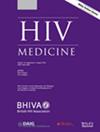The role of atherosclerosis in HIV-associated vasculopathy in young South African stroke patients
Abstract
Background
HIV-associated vasculopathy is known to cause stroke in people living with HIV (PLWH). The role of atherosclerosis is unclear. We assessed the aetiology of vasculopathy in PLWH and tested the utility of markers of subclinical atherosclerosis to distinguish atherosclerotic (AV) from non-atherosclerotic vasculopathy (NAV).
Methods
This cross-sectional study recruited PLWH with stroke at a hospital in Johannesburg, South Africa, from 2014 to 2017. Patients with meningitis were excluded. Cerebrospinal fluid (CSF) was tested for multi-viral polymerase chain reaction, including varicella zoster virus (VZV). Once an aetiological category was assigned, carotid intima-media thickness (cIMT) and aortic pulse wave velocity (PWV) were compared in AV and NAV, and to predetermined thresholds for subclinical atherosclerosis (cIMT≥0.70 mm, PWV≥10.00 m/s).
Results
Some 28/85 PLWH (32.9%) vs. 9/109 (8.3%, p < 0.0001) people-without-HIV had vasculopathy on computed tomography angiography. Only four PLWH had AV. Compared with NAV (n = 11), those with AV were older (50.0 ± 4.1 vs. 39.2 ± 9.2 years, p = 0.04) and had more cardiovascular risk factors (median 2.0 [IQR 1.5–2.5] vs. 0.0 [IQR 0.0–1.0], p = 0.02). cIMT in AV was higher than in NAV (1.01 ± 0.07 mm [n = 4] vs. 0.63 ± 0.04 mm [n = 9], p < 0.001). All with AV had cIMT and PWV above the predetermined thresholds, while all except one with NAV were below. We found evidence of VZV in eight PLWH and HIV-associated vasculitis in six.
Conclusions
Vasculopathy in PLWH in our region appears to be predominantly non-atherosclerotic. cIMT and PWV were useful adjuncts in distinguishing AV from NAV. Despite excluding meningitis, VZV was implicated in a large proportion, emphasizing the likely underdiagnosis of this treatable infection. We thus recommend CSF VZV testing in all PLWH with stroke.


 求助内容:
求助内容: 应助结果提醒方式:
应助结果提醒方式:


